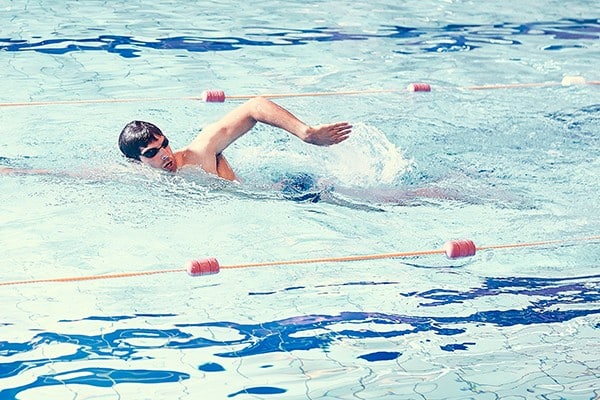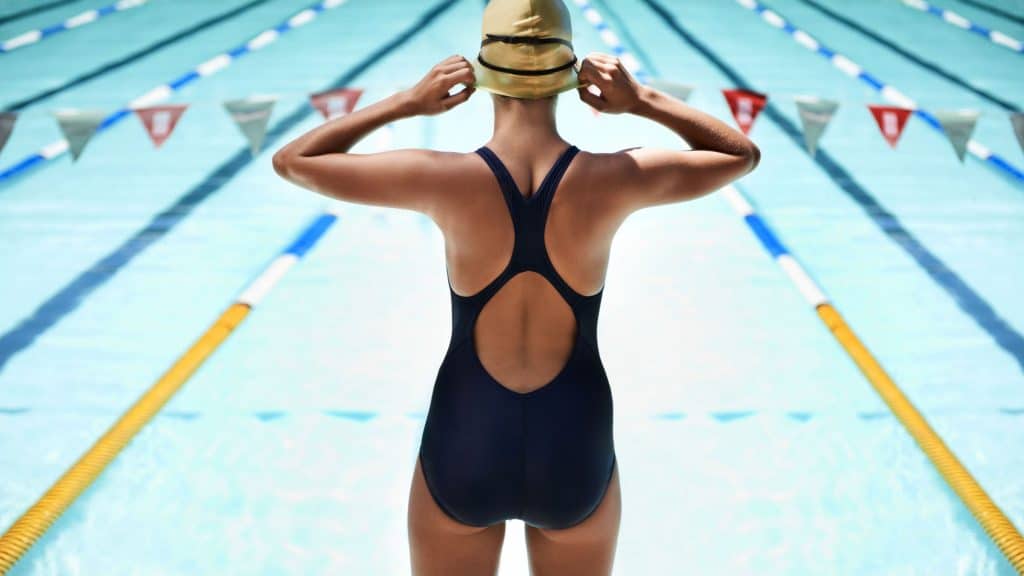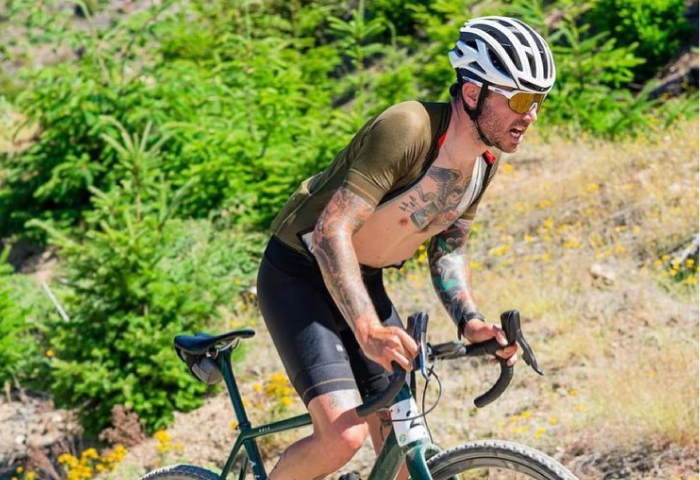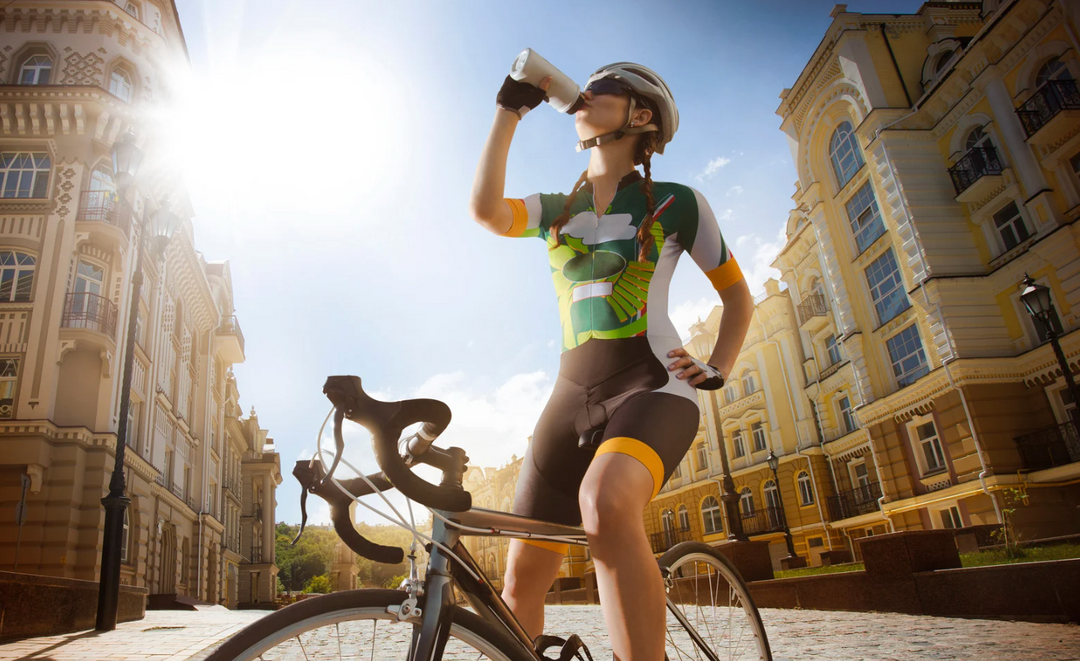#TheWerk - Developing Your Swim
How To Work On Developing Your Swim

Swimming is the most disliked section of a triathlon. My guess is that around 80% of triathletes would count the swim as their least favorite part of a triathlon.
A big part of training then is about making swimming easier and more enjoyable – as much as it is about making it faster.
A major question – that can either motivate or scare athletes off – is how quick can they go, what counts as good, or what people have to do to not be at the back. It’s always a challenge!
There is a wide range of opinions and thoughts of people, from those who want to nail getting good at swimming, all the way through to those who think it’s impossible – and are almost against putting in any work to try and improve. This is something that I think is self sabotage, putting your own mental blocks in the way of improvement, regardless of your ability, and it’s incredibly common.
The question has to be asked, is significant progress possible. And why is it so challenging to believe what might be achievable? How do we go about the journey, where do we start? And finally, how come some people make giant leaps forward, while others seem to stand still.
Humans have always been bipedal – upright – walking and running, since the dawn of time. We were the hunter and the hunted, and as a result we grew big, efficient, powerful leg muscles. These muscles have massive aerobic capacity for chasing food! On the other hand, our upper body was all about short, individual movements to use tools and weapons, for food or against each other.

As a result of this, young swimmers have previously spent most of their formative years learning to swim aerobically with their arms and upper bodies, being as efficient as possible. Teenage athletes might spend 20 hours a week in the water – mostly driven by their arms. For those that look at their own swimming, and think 50m is ok, quick even, but anything more than 300 meters is a suffer-fest, it is understandable to think that improving your swimming ability is pointless as an adult.
As recently as 25 years ago, it was thought that the brain and it’s learning capacity was pretty much fixed, determined once you had grown out of adolescence. Knowledge and research has moved forward a long way in the intervening time, and the theory is now that the brain has capability to grow, change and adapt throughout our lifetime.
Neuroplasticity refers to our brain remodeling, adapting, and organizing after the practice of a motor skill. Working on this can result in beneficial outcomes increasing athletic potential through greater movement competency. It really is possible to focus the brain on remodeling new movement and techniques. You really can teach old dogs new tricks!
From this, it follows that the aerobic model for sports – and in particular, swimming – needs to change somewhat. A neurological pattern that can build efficiency both in learning and in our swimming ability definitely is a brighter message than the
Rather than swimming remaining an aerobic model, the new idea believes teaching will help it become a neurological one. This certainly sounds better than the first message of fateful prospects of the original model. The question is, how can there be such a big gap between the original ideas?
I’m fortunate enough to have been teaching and coaching for 20 years – and have been a product of the original model of training, but in later years have benefited from the advances in knowledge that have meant I have done personal bests in my 30s doing 20% of the time in the water. With this knowledge, I have seen large swathes of people improve their swimming massively to believe that change is not only possible but probable in the right circumstances.
For big changes to happen, the environment has to be strong – the athlete has to be focused and practice with intent, the coaching and cues have to be good, appropriate and understandable. How much change can occur is very much dependent on the starting point, a belief of what is possible, and commitment to the cause! Added to this, while we can hope for progress, expectation can be the enemy, so reason and realism have to be included with the goals.
Being able to understand movements, especially from a sporting perspective, can be of massive assistance. You don’t have to have a swimming or similar background for this to work, to help you. If you play rugby, or climb, horse ride or play netball, there will be cross overs that will help you understand various movements. Building up a good solid swim is no different to building up any other technique. The human body is a machine. Machines work best in straight lines – and there are only so many variations of straight lines that the body can pass through. As a result, this can really help with proprioception and timing, important skills in all walks of life.
Commitment and time are required for any skill to become natural, to be second nature. In the social media age, with instagram results, many people lack patience and concentration to focus on learning a skill over time. Disillusionment is common and disappointment leads to abandoning. Learning a swim stroke is akin to playing golf – where we are all chasing more improvement, more fluidity – or the ease of a language as we improve, where perfection isn’t attainable, but we can always be more attuned to. Obviously, swimming is made all the more challenging by the fact that breathing is not simple; our body’s natural survival instincts have to be overridden somewhat.
What people see as being a good swimmer is always subjective. Most triathletes would say that a swimming quicker than 22 minutes for 1500 meters is incredibly quick – it would be in the top 5% of most triathlon swims – but at swim club level, it wouldn’t make a final in a 13 year old county championships. That being said, if you are someone swimming 30 minutes for 1500 meters, being able to swim 25 minutes is a MASSIVE gain and change, so perspective is always required.
Brain development will continue to aid sporting improvements as we move forward and the possibilities are endless!
How Do We Improve?
One step at a time! The chances are that you may have very large, rapid jumps in improvement to start with – these things excite us and keep us motivated. Naturally though, as with anything, that trajectory cannot continue indefinitely. If that was the case, people would be breaking Usain Bolt’s 100m record regularly.
This slow down and plateauing can be frustrating. We have to move through all the levels of learning for all skills, no matter what our level of ability. Being in a better position in the water will make life easier for us – it will reduce drag and so reduce fatigue. It also makes it easier to be in a propulsive position, so those gains become two-fold, and progress can really seem quite easy; even when we have to think hard about it all.

What does a 25 minute 1500, 1.40 100 meter and 25 second 25 meter swim all have in common? They are all exactly the same speed. A large percentage of people can do the last. A lot can do the middle. Relatively few can do the first. The biggest thing to remember is not trying to go faster, just being able to maintain that speed comfortably over a long period. The key here is about making your swim as repeatable. If it’s repeatable, then it becomes sustainable. If it’s sustainable, you can keep the effort lower. Learning these levels of accuracy and relaxation takes time, but with the right instruction can be learned and built up.
What Signs Should I Be Looking For?
1. First and foremost, you want to be noticing is when you are making errors, repeating your old bad habits. Noticing these drops is not a bad thing – on the contrary. That awareness is all about what neuroplasticity is at. The ideal would be to make those drops fewer and farther between. Then it’s about making the good habits natural, fluid and less mechanical. This is where you have to remember that it’s not about doing things perfectly, not trying to be perfect. The more you can let things go, and just be aware of what you are doing, as opposed to forcing things. The more that you force elements of your stroke, it becomes more mechanical, it slows down and it stalls your progess.
2. The breathing becomes more normal, more controlled as it does at any other point in other parts of life. Because swimming is one of few sports that limits the ability for you to breathe, it gives you challenges to your survival instinct that nothing else does. The lack of options you have to get oxygen into your lungs can mess with your mind. It induces panic. When you bike or run, if your breathing goes out of control you can slow down and get control. In the water, that is so much more difficult. So when you are in control and you are relaxed, the breathing will come with that.
What Tells You If You Are Improving?
Training and swimming on your own when you don’t have feedback can really throw you when you’re not sure what to look or feel for. You don’t have that instant feedback, you can’t see exactly what is going on. It’s difficult to ensure that you’re actually doing what you think you’re doing. Looking at the data only tells you a part of the story.
We’ve all had days (maybe many of them) where we swim hard and don’t go any quicker. Or that we swim easily (and therefore relaxed) and swim much faster. Swimming is a cruel mistress in that regard.
Taking forward steps, here are some sensations that you should look out for:
1. Looking at your pull buoy or wetsuit swims as something to assist speed rather than as a crutch.
2. Not going backwards – hopefully moving forward – when doing kicking drills – getting your body in the right position and then getting that fluid leg action takes time.
3. Feeling in control of the water when you engage – so you don’t feel a need to rip or grab, and move forward smoothly.
4. Finding the ability to change through gears without increasing your number of strokes – maintaining your repeatability. All of this comes down to control – and this comes with familiarity in the water, familiarity with your skills.
5. Ensuring that your entry and exit are as close together as they can be, that your hand doesn’t slip back through the water because it is locked in position. You can see this against the tiles, or the lane rope markers.
6. Getting your breaths in in a calm and relaxed manner, not feeling so rushed that you are gasping for air.
7. Feeling comfortable breathing out under the water and breathing in above the surface, in an automatic fashion. Smooth, consistent breathing is a hallmark of improved ability in the water.
8. Being in control of your swim speed so that you can descend (get quicker), ascend (intentionally get slower) or negative split (swim the second half quicker than the first) your swims at will.
9. Not dreading swimming in lakes, rivers or the sea, maybe even looking forward to them – heaven forbid!
10. Feeling the ability to relax in and on the water, if not necessarily enjoying yourself then at least feeling comfortable and not fearing it.
I am of the mind that adult swimmers absolutely can and will improve with good application. I wouldn’t do my job if it was such a dead loss. Some people will improve quickly, while others won’t. I absolutely believe that everyone is more than capable of swimming long swims at 2 minutes per 100 metres – especially triathletes have an aerobic engine so that fitness shouldn’t be an issue. Improvements can come for anyone at any ability just by putting the body at a better position in the water. That said, while it is simple, it is not always easy. While the same principles apply to everyone, not everyone will be able to get to those positions quickly.
Taking time in the pool is important. Consistency is important. Not everyone can do 2 or 3 swims every week, but being able to show up at the pool on a regular basis is key. There are many things that you can do out of the water to improve your swimming – strength work and mobility will all help, and at the moment stretch cord work – but at the end of the day, if you aren’t getting in the water, you can’t make the steps forward that you might like.
If you have any questions or comments, please feel free to get in touch; either by email (john@tri-coaching.co.uk) or Instagram! Remember, you can always get your swimming reviewed in the endless pool with our video swim analysis packages.







Leave a comment